2021 International Congress on Medieval Studies Report
July 7, 2021 in Conference, Conference Announcement, International Congress on Medieval Studies, Kalamazoo, Reports
Report
Activities of the
Research Group on Manuscript Evidence
at the
56th International Congress on Medieval Studies
(10–15 May 2021)
#kzoo2021 / #kazoo2021
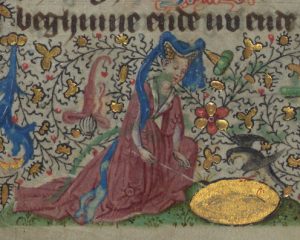
Baltimore, The Walters Art Museum, MS W.782, folio 15r. Van Alphen Hours. Dutch Book of Hours. Image via Creative Commons.
We report the accomplishment of our activities at the 2021 ICMS, held entirely online. Individually and collectively, we have attended the Congress for many years. Our ICMS blog records activities sponsored and co-sponsored by the RGME along the way.
This year’s Congress presented the first time for a totally “virtual” process. Next year’s Congress will be the second.
The new format posed challenges, mostly surmounted. Gladly we observe that, albeit with several technical glitches and scheduling issues, the activities of the RGME, both sponsored and co-sponsored, succeeded as we had wished. The Sessions and Business Meeting proceeded smoothly, with time and scope for feedback and discussion.
How We Prepared
First, there was the cancellation of the 2020 Congress itself. See our 2020 Congress Program Announced.
Then came the re-planning for the 2021 Congress. Initially, it was designed to be held in person, like the 2019 Congress, and others before it.
Only after all the re-submissions of our intended 2020 Sessions to the Congress Committee, the completion of the 2021 Congress Call for Papers, the selection of the Session Programs, and the bookings for our Reception and Business Meeting (see our 2021 Congress Planning), did there come the decision that the 2021 Congress had to take place only online.
That choice led all 3 co-sponsors for our planned Reception —RGME, Societas Magica, and Index of Medieval Art — to agree that it makes sense to wait, instead, for such an event until a suitable occasion in person. Likewise, a few rearrangements were required for the Sessions as had been planned.
Preparing for the 5 Sessions and our Open Business Meeting, we announced our Activities for the 2021 Congress Program.
Next came the Congress itself, as described in its own Program (plus Corrigenda), with further information on its website.
Sessions
Recorded Sessions

Vajra Regan presents his Paper for his 2021 Congress Session on “Prologues”.
With the virtual format, some Congress events were recorded, so as to be available for viewing by Congress Registrants from 17 to 29 May. According with the participants’ wishes, 2 of our Sessions were recorded.
- Medieval Magic in Theory:
Prologues to Learned Texts of Magic
Congress Session 103
- Revealing the Unknown, II
Congress Session 279
Thus were available, for a time, the chances to view and to re-view, a few of our activities ‘there’ this year. For them and the others, this Report describes the accomplishment of the plans, already for the 2020 Congress, which had to be cancelled. This year’s Congress gave the opportunity to complete the plan, with some changes as appropriate.
2020>2021
After the cancellation of the 2020 Congress (see our 2020 Congress Program Announced), preparations for the 2021 Congress permitted re-submitting the sessions which had been designed to take place in May 2020. By popular request, we performed that re-submission for all 5 Sessions. With approval by the Congress Committee, these Sessions joined the listings of all sessions on call on the Congress website and formed our own 2021 Congress Call for Papers.
New for the 2021 Congress, all proposals (or re-proposals from 2020) had to be made through a Confex system, as directed on the Congress website. The new system imposed teething problems for prospective Participants, Session Organizers, and Sponsors. The challenges emerged in several forms at various stages, including close to the several deadlines for submission of proposals for Sessions (1 June), receipt of proposals for their Papers (15 September), and submission of our choices for their Programs (1 October), along with the bookings for our Business Meeting and Reception. We thank Elizabeth Teviotdale of the Medieval Institute for direct help at many stages.
Then we could announce our 2021 Congress Planning in Progress, while waiting to for approval from the Congress Committee for our proposed Programs and the scheduling of the Sessions.
Now, we announce the Programs of our Sessions and publish the Abstracts of their Papers. (With updates as appropriate for the Abstracts which had been prepared for the 2020 Congress.) The Abstracts are accessible both through this Announcement (You are Here) and through the Indexes of published Abstracts by Year and by Author.
We thank our Participants and Organizers for their contributions. We look forward to the Sessions, and offer the Abstracts of Papers as a foretaste of the menu of discussion.
2021 Congress Activities
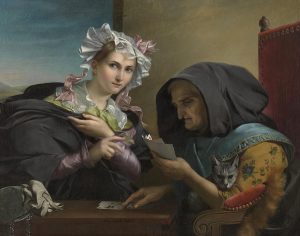
Adèle Kindt (1804–1884), The Fortune Teller (circa 1835). Antwerp, Koninklijk Museum voor Schone Kunsten. Image via Wikimedia Commons.
1) Sessions
For the 2021 Congress, we presented the same 5 Sessions as those planned for the 2020 Congress, with a few changes (including 1 revised Session Title and 3 new Papers).
They comprise 2 Sessions sponsored by the RGME 3 Sessions co-sponsored with the Societas Magica, in the 17th year of this co-sponsorship at the International Congress on Medieval Studies.
The 2021 Congress is the 17th year of our co-sponsorship with the Societas Magica, in a constantly constructive partnership of friends, students, and colleagues.
2) Reception Postponed
We had planned for a Reception co-sponsored with the Index of Medieval Art at Princeton University (formerly the Index of Christian Art) and the Societas Magica, but we agree to wait for some occasion when such a gathering might take place in person.
Glimpses of our co-sponsored Receptions at the Congress appear in the souvenirs of our Celebrations and in the Reports for the individual Congresses
3) Business Meeting
Like the 2015–2020 Congresses, we planned for an Open Business Meeting. Customarily, the Meeting is accompanied by a 1-page Agenda, which concisely reports our Activities, Plans, and Desiderata.
Responding to changes, the Agenda for the 2021 Business Meeting adopted a new approach. The revised 2020 Agenda for the postponed 2020 Business Meeting took into account the changes for that year. The Agenda for 2021 offers scope for renewal. This year, we continue to offer the 1-page Agenda in customary form, encapsulating a set of Reports about Activities in progress, accomplished, planned, and desired. Earlier years call it the Agenda, Reports included. This year, we call it the Agenda Report. To it, we add another 1-page list of items which focus upon the Agenda for the Business Meeting itself.
Their 1-page statements serve as concise Reports for our Activities, Plans, and Desiderata. Some of the Agendas over the years stand among the Top 5 Most Popular Downloads on our site. These publications, like most of our Publications, are FREE, but we welcome donations, both in funds and in kind, for our nonprofit mission, with the option of tax-deduction for your Donations.
For more information about our 2020 Business Meeting, please visit the page for our evolving tradition of Business Meetings.
2021 Congress Sessions
Our events at the Congress, as always, are designed to represent, to explore, to promote, to celebrate, and to advance aspects of our shared range of interests, fields of study, subject matter, and collaboration between younger and established scholars, teachers, and others, in multiple centers.
Again we co-sponsored Sessions with the Societas Magica (3 Sessions this year), in the 17th year of this co-sponsorship.
5 Sessions
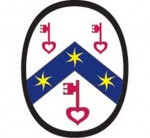 I. Sponsored by the Research Group on Manuscript Evidence
I. Sponsored by the Research Group on Manuscript Evidence
Sessions 1–2
1–2. Seal the Real: Documentary Records, Seals & Authentications
Congress Sessions 259 and 279
- 2021 Congress Program, pages 92–93 and 100–101.
Organizer
Mildred Budny (Research Group on Manuscript Evidence)
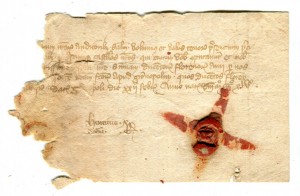
Document from Grenoble dated 22 February 1345 (Old Style), with wax seal. Reproduced by permission.
The Aim:
These sessions explore the presentation and attestation of documentary records in the medieval and early modern periods, in the long transition to the modern custom of signatures as autographs — as distinct (partly) from earlier ‘signatures’ often made by proxy, whether by cross-signs, names inscribed by others on behalf of the signatory, personal or official seals, or other forms. The fields of consideration include forgeries (‘signatures’, seals, and questionable documents), reported records of documents perhaps otherwise lost (as in cartularies, chronicles, and other narratives), and the occasional preservation of fingerprints upon the records themselves.
The time-honored human determination to establish recognized — that is, effective — modes of authenticating intentions and actions by individuals and institutions alike underpins the historical transmission (or disruption, willful and otherwise) of formal records of agreements, sales, transfers, decisions over grievances and feuds, and other impactful official arrangements across the centuries. Examining case studies for this session, we encourage multiple approaches, subject matters, and methodologies for analyzing the strategies adopted (successfully or otherwise) in the pursuit of such a quest for authentication.
The desire effectively to express identity and authenticity as a matter of record may well resonate with many participants. The Session considers aspects of the historical traditions, improvisations, inventions, and (it may be) occasional failures of earlier centuries in such a quest. Perchance we might learn instructively from the past.
Part I: Signed & Sealed
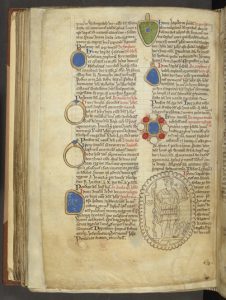
London, British Library, Cotton MS Nero D I, folio 146v. Matthew Paris’s description in the ‘Liber Additamentorum’ of the gems of Saint Albans Abbey.
Presider
Derek Shank
Presenters
Laura J. Whatley (Fine Arts Department, Auburn University — Montgomery)
“Sealing the Historical Record in Matthew Paris’s Chronica Maiora”
John McEwan (Center for Medieval and Renaissance Studies, Saint Louis University)
“Antiquity Revisited: Ancient Gems in Medieval English Seals”
James Eric Ensley (English Department, Yale University)
“Signed, Sealed, Delivered? Hoccleve’s Ambiguous Seal Poetics”
Part II: × Marks the Spot
Presider
Derek Shank (Research Group on Manuscript Evidence)
Presenters
Michael F. Webb (Independent Scholar, Detroit, Michigan)
“By Our Own Hand: Cross-Signs in the Cartularies of Angoumois”
David W. Sorenson (Alan G. Berman, Numismatist)
“A Strange Seal from Grenoble from 1346, or Headbinding in France: Carryover and/or Forerunner in Toulouse?”

Seal on a Document from Grenoble of 22 February 1345 (Old Style).
Also, see our blog for on-going discoveries in the study of seal matrices, signatures, and documents, seals sometimes included:
Manuscript Studies, for which see its Contents List.
II. Co-Sponsored with the Societas Magica
 Sessions 3–5
Sessions 3–5
Session 3. Medieval Magic in Theory:
Prologues to Learned Texts of Magic
Congress Session 103
- 2021 Congress Program, pages 38–39.
Organizer
Vajra Regan (Centre for Medieval Studies, University of Toronto)

Hermes Trismegistus. Frontispiece image (Lyons, 1669) via Wikimedia Commons and Wellcome Images.
The Aim:
The prologues to medieval texts of learned magic could serve a variety of functions. They were a space for their authors to announce the theme of the work, to situate the work within a specific literary, philosophical, or theological landscape, and to lay special claim to the reader’s attention. Consequently, these prologues have much to tell us about the traditions and beliefs underlying certain magical texts. Moreover, because many magical texts are substantially anonymous compilations, their prologues often provide unique access to the lives and contexts of the men and women behind the parchment.
The aim of this session is to explore these still largely understudied prologues which testify to the variety of medieval approaches to ‘magic’. We are especially interested in how magic is theorized in these prologues. What insights do these prologues offer into contemporary debates about the epistemological status of magic? Moreover, what can they tell us about the social, religious, and institutional contexts of their authors and readers?
Organizer
Vajra Regan (Centre for Medieval Studies, University of Toronto)
 Presider
Presider
Mildred Budny (Research Group on Manuscript Evidence)
Presenters

David Porreca presents his Paper for Vajra’s 2021 Congress Session.
David Porreca (Department of Classics, University of Waterloo)
“Introducing the Picatrix: The Prologue’s Balancing Act between Content and Perception”
Vajra Regan
“The Secret in the Prologue to the Collected Treasures:
Biblical Allusions, Occult References, and Coded Language in a Thirteenth-Century Medical–Magical Lapidary”
Handouts 1 & 2
Handout Latin and English (Revised)
Handout Copyright_Areola

Vajra Speaks in his Session at the 2021 Congress.

Vajra Listens in his Session at the 2021 Congress.

Vajra Smiles in his Session at the 2021 Congress.
Respondent

Phillip Bernhardt-House presents his Response for Vajra’s 2021 Session.
Phillip A. Bernhardt–House (Skagit Valley College, Whidby Island Campus, and Columbia College, NAS Whidby Island Campus)
“(Auto)Biography, Anonymity, and Authority:
Prologues and Their Lack in a Selection of Magical Texts
(A Response)”

2018 Poster for Session on “Celtic Magic Texts”.
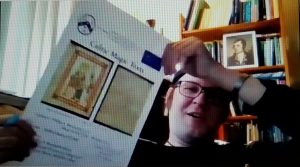
At the 2021 Congress online, Phillip Bernhardt-House shows the RGME Poster for his 2018 Congress Session.
Among the texts which Phillip considered in his Response are the early-medieval Irish Saint. Gall Incantations.
As a ‘bonus’, Phillip surprised us pleasantly by showing us the RGME Poster for his 2018 Session on “Celtic Magic Texts”. He remarked, “it wouldn’t be a Congress Session without one of Milly’s Posters”.
New for this Year: This Session’s ‘Home Page’
In a new development for the RGME, this Session now has its own Page: Medieval Magic in Theory. It gathers into one place the description, Abstracts, links, and illustrations for the Session. We invite you to have a look, and, if you wish, to offer Comments and feedback.
Sessions 4–5: Revealing the Unknown, Parts I–II
Congress Sessions 181 and 201
- 2021 Congress Program, pages 66 and 73.
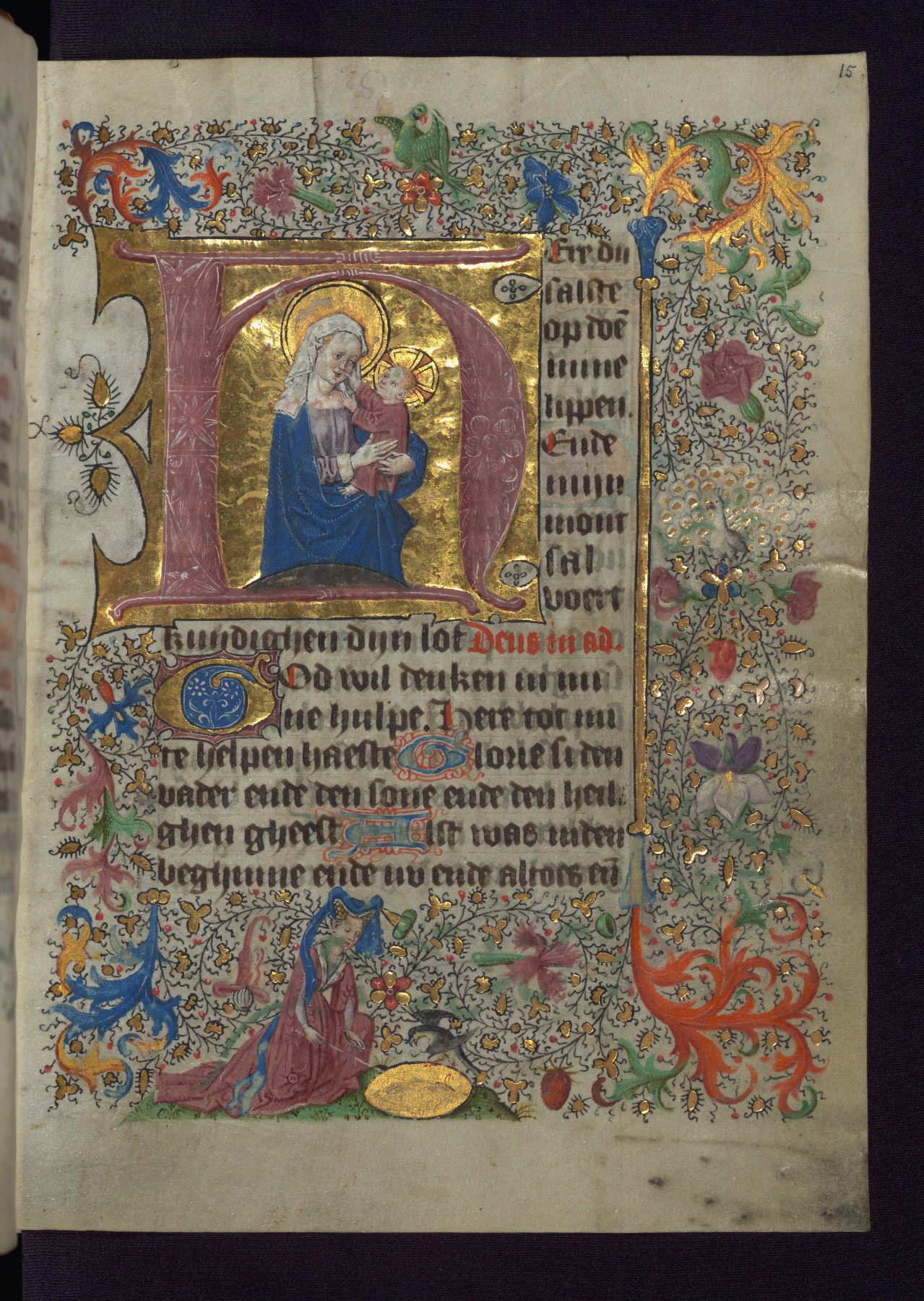
Baltimore, The Walters Art Museum, MS W.782, folio 15r. Van Alphen Hours. Dutch Book of Hours. Opening page of the Hours of the Virgin. Image via Creative Commons. At the bottom of the bordered page, an elegantly dressed woman sits before a shiny bowl- or mirror-like object, in order, perhaps, to perform skrying or to lure a unicorn.
4. Revealing the Unknown I:
Scryers and Scrying in the Middle Ages and Early Modern Period
[Note: Some last-minute changes to the Program, as of 11 May 2021, are reported here as Updates.]
Organizers
Sanne de Laat
English Department
Radboud University Nijmegen
László Sándor Chardonnens
English Department
Radboud University Nijmegen
The Netherlands
The Aim:
From the little boy on the lap of the priest to the astrologer physician Richard Napier, scryers have fulfilled a significant role in spirit communications throughout the Middle Ages and early modern period. That children were instrumentalized by clergy doubling as ritual magicians has been known for a long time. The activities of professional adult scryers, such as Edward Kelley and Sarah Skelhorn, are likewise well-documented. Recently, however, attention has moved to the scrying activities of medical and astrological professionals, as Ofer Hadass’s study of Richard Napier bears out. The autobiography of William Lilly and the manuscripts of Elias Ashmole suggest that early modern astrologer physicians utilized scrying in different ways from the medieval clerical underworld.
This session offers an opportunity to reassess older notions about scryers and scrying, and to engage with current research on the identity and activities of professional scryers. Topics for papers could feature, for instance, the techniques used by scryers, the necessary instruments for this craft, as well as the goals for which a scryer’s services could be used. Diachronic approaches to the topic are welcome, and papers that consider cross-cultural approaches, such as Jewish or Arabic scryers and scrying practices, are encouraged.
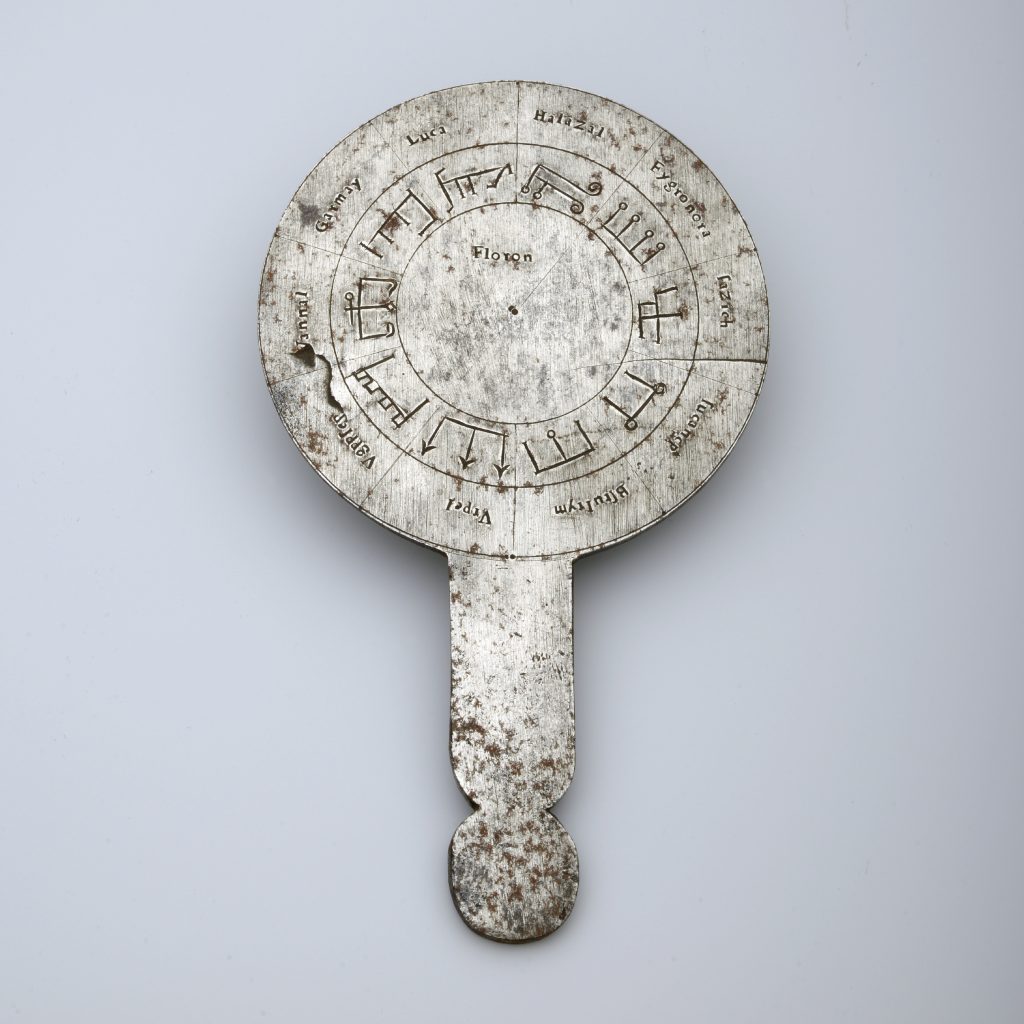
Magic mirror of Floron. Mathematisch-Physikalischer Salon, Staatliche Kunstsammlungen Dresden. Via Creative Commons.
Presider
László Sándor Chardonnens
Update: > Mildred Budny (Research Group on Manuscript Evidence)
Presenters
Hélène Colleu (POLEN Lab, Université d’Orléans)
“Alia experimentum [sic] cristalli pro puero: Scrying in a 15th-century Nigromantic Manuscript”
Daniel M. Harms (Associate Librarian, SUNY Cortland)
“Scrying with the Saints: Holy Personalities and Their Marginality in Early Modern Magic”
Sanne de Laat
“Seeing the Whole Picture: Scryers and Their Networks in Medieval and Early Modern England”
Marla Segol (State University of New York at Buffalo)
“Gender and Scrying in 16th-Century Ottoman Kabbalah”
Update: Marla was unable to attend or present her paper. It was represented by her Abstract, which the Presider read in her stead, with permission by both the Author and the originally intended Presider.
[Editor’s Note: It can be useful to have an Abstract in place, as a place-holder, when conditions do not permit the presentation, however intended, to take place at the appointed time. The Abstracts, with the Authors’ Permission, are available not only through our posts for the individual Congresses, but also through the Indexes by Year and by Authors’ Surnames.]
5. Revealing the Unknown II:
Sortilège, Bibliomancy, and Divination
Organizer
Phillip A. Bernhardt-House (Skagit Valley College, Whidby Island Campus, and Columbia College, NAS Whidby Island Campus)
phillip.bernhardthouse@gmail.com
The Aim:
From earliest times, humans have sought methods to contact supernatural entities to obtain knowledge of the present or future, known as divination. In ancient and medieval contexts, two such methods that were sometimes connected were sortilège and bibliomancy: for example, the Lots of Mary, Sortes Astramphysychi, Homeric Oracles, and Virgilian Oracles.
These practices involved numerological processes to select specific passages from canonical texts in order to divine on desired topics. This session focuses on these and other methods of divination, so as to understand how textual and other authorities became invested with powers far greater than the impacts of their literary merits.
Presider
Phillip A. Bernhardt-House
In opening and closing the Session, Phillip demonstrated a consultation, regarding a successful accomplishment, of the ancient method of Divination by the Ephesia Grammata. His chosen method employs a formula of six words:
- ΑΣΚΙ(ΟΝ) ΚΑΤΑΣΚΙ(ΟΝ) ΛΙΞ ΤΕΤΡΑΞ ΔΑΜΝΑΜΕΝΕΥΣ ΑΙΣΙΟΝ (or ΑΙΣΙΑ)
- aski(on) kataski(on) lix tetrax damnameneus aision (aisia)
He has demonstrated the method for us also in earlier years of the Congress. This time, his questions addressed the successful accomplishment of the Session. As part of the demonstration, Phillip explained both the process of formulating questions and the directions for interpretations of the ‘answers’.
Presenters
Mark Roblee (Department of History, University of Massachusetts Amherst)
“The Chaldean Oracles and the Ritual Divination Practices of the Neoplatonists in Late Antiquity”
[Note:
The following paper was not included in the online Session, although the Abstract indicates the intended scope and range.
Laurence Erussard (English Department, Hobart and Smith Colleges, Geneva, New York)
“Divination: The Carving of Runes, and Their Relationship to Poetry in Icelandic Literature”

Woodcut frontispiece by Guiseppe Porta for Francesco Marolini da Forli, Le Sorti . . . (Venice, 1540). Image Public Domain via Wikimedia Commons.

Michael Conrad presents his Paper for the 2021 Congress.
Michael A. Conrad (Kunsthistorisches Institut, University of Zurich)
“Unlocking the Future: Remarks on the Materiality of Tools of Sortilège”
Update: Title Change >
“Leafing Through Flowers: Ecological Networks of Sortilège and Sortition”
The New Title Onscreen:

Michael Conrad’s First Slide Onscreen for the 2021 Congress.
Carole A. Myscofski (Religion Department, Illinois Wesleyan University)
“Divining the Future in Sixteenth-Century Brazil: Texts and Pretexts”


Carole Myscofski presents her opening Slide for the 2021 Congress.

Carole Myscofski considers Lisbon Tribunals in her Paper for the 2021 Congress.

Carole Myscofski closes her Paper for the 2021 Congress with Thanks and Bibliography.
*****
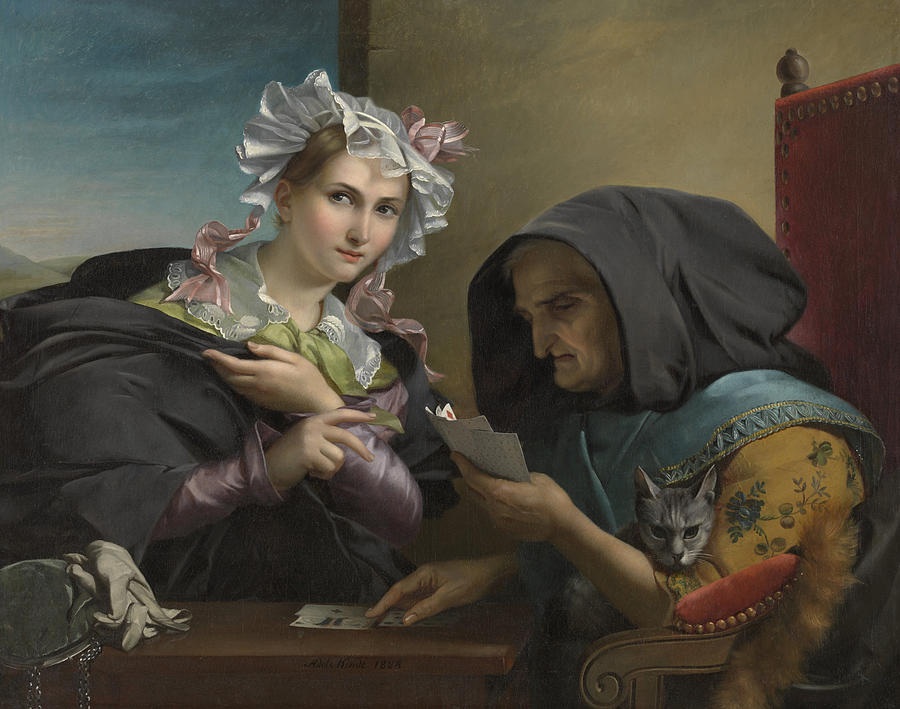
Adèle Kindt (1804–1884), The Fortune Teller (circa 1835). Antwerp, Koninklijk Museum voor Schone Kunsten. Image via Wikimedia Commons.
Note on the image shown above.
Adèle Kindt (1804–1884), The Fortune Teller (circa 1835). Antwerp, Koninklijk Museum voor Schone Kunsten. A young lady, brightly lit and beautifully dressed, looks outward as an older woman, beneath a dark hood, holds a set of cards and looks at them with intent. The forward-facing cat, seated in the woman’s lap, gazes at beholders with raised ears and an inscrutable expression.
Afterword, Hindsight, and Foresight

Michael Conrad contemplates our Divination Session at the 2021 Congress.
With the cancellation, postponement, rescheduling, and restructuring of our Sessions from the 2020 Congress to 2021, it has not been lost on us that some of our proposed Sesions considered the issues of, and various approaches across time to, the skills of Divination as they might endeavor to Reveal the Unknown. Who could have foretold the journey undertaken by those Sessions, as well as the others? Not least that the Congress would have to take place online, and how that process would unfold when the time came?
We thank our organizers, presenters, sponsors, and Congress host for their perseverance, and our audiences for their participation and feedback.
*****
2022 Congress
Following the 2021 Congress, we begin to prepare for the 2022 Congress. It is scheduled to take place online from 9 to 14 May 2022.
By the deadline of 1 June 2021, we submitted proposals for Sessions, intended variously to be sponsored by the RGME (2 Sessions), co-sponsored with the Societas Magica (1 Session), and, in a new collaboration, co-sponsored with the Ibero-Medieval Association of North America (2 Sessions). We await news from the ICMS Committee about those proposals. Watch this space!
[Update on 20 July 2021:
With responses to our proposals from the ICMS Committee, we announce the Call for Papers for the four accepted Sessions. See our 2022 Congress Preparations.
The deadline for your proposals of Papers is 15 September 2021.]
*****
For updates, please visit this site, our News & Views, and our Facebook Page .
Also, follow our blogs:
Please Contact Us with your questions and suggestions.
For our nonprofit educational mission, with tax-exempt status, donations in funds and in kind (expertise, materials, time) are welcome. Join us!

*****
